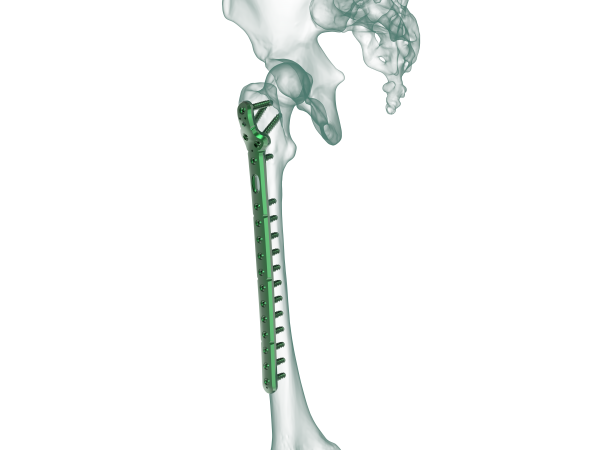
TRUE LOCK Proximal Femur Lateral Anatomic Plates are indicated for fractures of the femur including:
– Fractures of the trochanteric region, trochanteric simple, cervicotrochanteric, trochanterodiaphyseal, multifrag- mentary pertrochanteric, intertrochanteric, reversed or transverse fractures of the trochanteric region or with additional fracture of the medial cortex
– Fractures of the proximal end of the femur combined with ipsilateral shaft fractures
– Metastatic fracture of the proximal femur
– Osteotomiesoftheproximalfemur
– Also for use in fixation of osteopenic bone and fixation of nonunions or malunions
– Periprosthetic Fractures
The upper end of the femur; It is the bone structure that covers the femoral head, neck and 5 cm distal of the small trochanter. Subtrochanteric femoral fractures make up 7% to 20% of femur fractures. It occurs with high energy trauma at a young age and simple fall at an advanced age. Trochanteric fractures make up 55% of femoral upper end fractures and are mostly seen in elderly, osteoporotic patients. As an alternative to existing fixation methods for both trochanteric region and subtrochantanteric region fractures, locking anatomic plates for proximal femur fractures have been designed.
Anatomical plate; right & left
9 hole options between 3-19
TRUE LOCK Proximal Femur Lateral Anatomic Plates are made of Ti6Al4V ELI material (ASTM F136)
